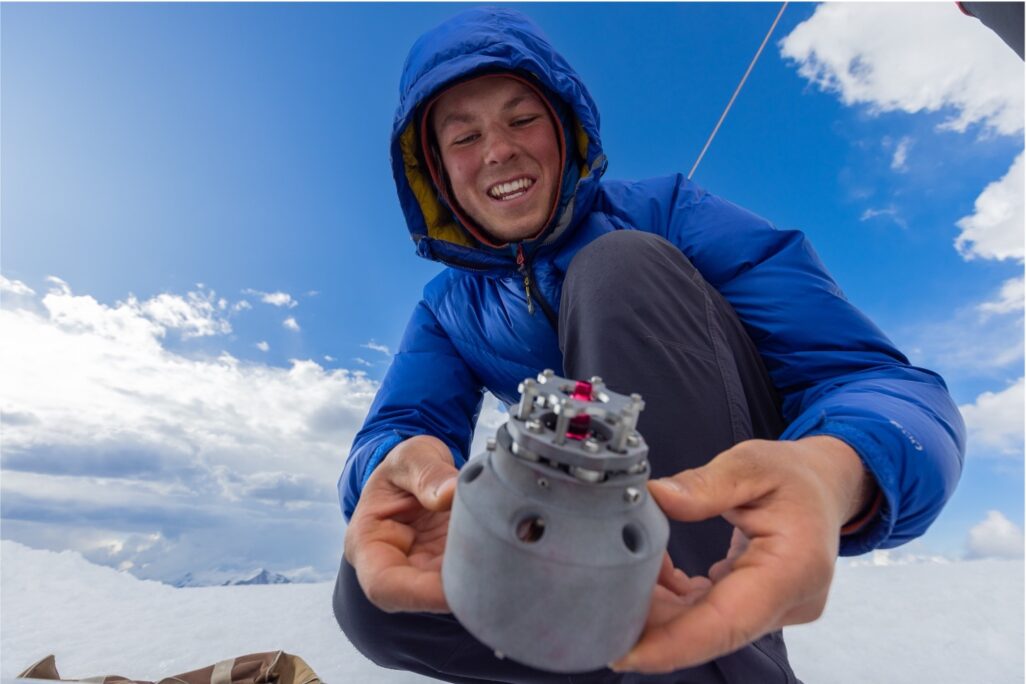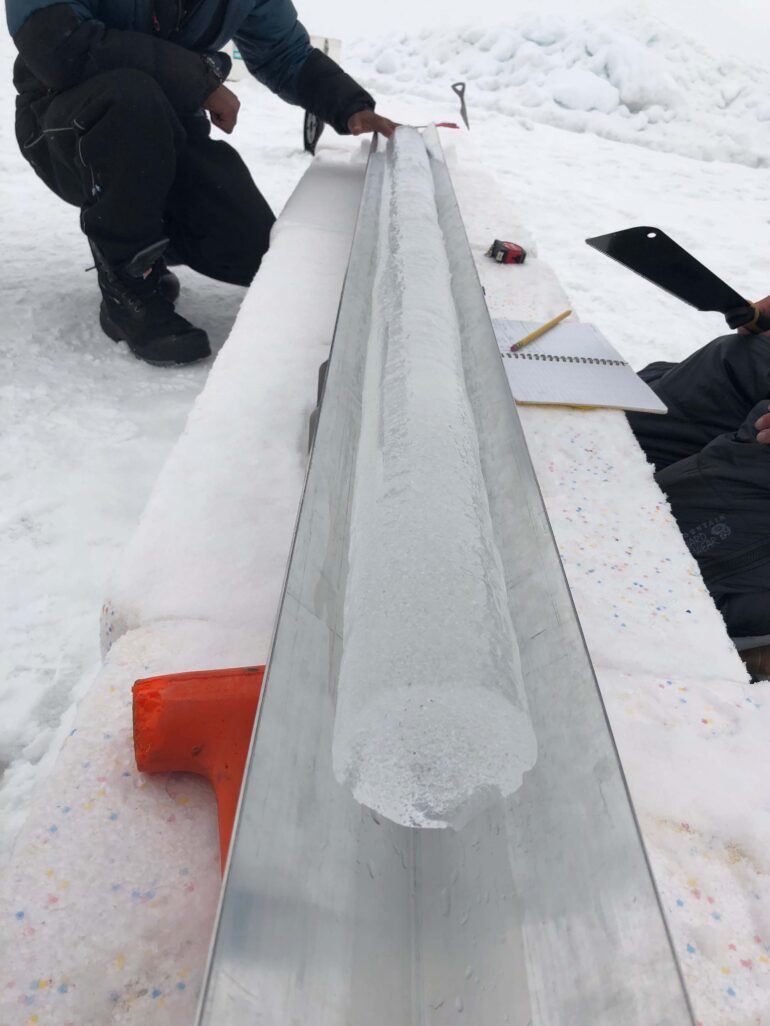Quelccaya Ice Cap — SSEC engineer joins Peruvian expedition to extract glacial ice cores
Trapped in the glacier of Quelccaya Ice Cap – the largest ice cap in the Peruvian Andes Mountains – is a historical timeline that tells the story of the region’s climate. Its past, and possibly, its future.
For UW–Madison Space Science and Engineering Center’s Elliot Moravec, an engineer who is accustomed to working in the extreme environments of Antarctica and Greenland, his 2022 expedition to Peru was fraught with severe weather, jagged terrain and high winds – at an altitude of 5,670 meters (18,600 feet). But through a collective effort of scientists, engineers, community organizers and Peruvians, they were able to extract a series of ice cores to better understand climate change and the glacier itself.
Moravec is a member of the U.S. Ice Drilling Program team, providing ice drilling field support to the National Science Foundation through the IDP Cooperative Agreement with Dartmouth, University of Wisconsin, and University of New Hampshire. The IDP group in Madison, Wisconsin designs, builds and deploys ice drills around the world.
To understand the past and future climate of the region, Moravec joined a 2022 expedition led by researchers at the Climate Change Institute at the University of Maine to retrieve a continuous ice core record from the surface to the bedrock below.
Ice cores are long, cylindrical samples of glacial ice containing useful information for scientists studying Earth’s climate. Over millennia, glaciation traps particles of air, snow, sea salts, dust, volcanic plumes and human made pollutants – providing a climatological snapshot in time. Like rings of a tree, an ice core tells a story throughout its deep layers.

As the largest ice cap located in the tropical latitudes, Quelccaya has been studied since the 1970s and has helped scientists understand the climatology of the Andes Mountains and surrounding regions. In line with global trends, the Andes are seeing increases in annual temperatures due to climate change. In fact, a 2018 expedition noted an acceleration in melting of the Quelccaya Ice Cap, with the most significant melting in 2022.
For Moravec, the four-week expedition began in Madison, Wisconsin (270m). After landing in Cusco, Peru they travelled to the village of Upis (4,300m) where he and the team spent a week acclimatizing and preparing gear for the ascent. After three more stops they reached basecamp at the foot of the glacial ice (5,200m), with the summit another three-hour hike up steep terrain.
The expedition required transporting their gear including shelters, fuel, cold weather clothing and the drill. Their trek was made possible only by a community of logistics providers and porters (and their horses) who hauled everything to the summit.
“In places like Antarctica and Greenland, there is an infrastructure built around science that makes transporting heavy equipment easier with available vehicles, snow machines and airplanes,” says Moravec. “We didn’t have any of that for this trip, and we couldn’t have done it without the help from the community organizers and porters.”
IDP drills are specialized tools designed and chosen to meet the conditions and scientific needs of each expedition. For this trip, Moravec operated an electrothermal drill, an ice coring drill that uses heat to burrow through a glacier while retrieving ice cores. The drill consists of more than 30 pieces including motor, generator, gear boxes and tower assemblies. Once assembled at the peak, drilling was a methodical process that took five days until they hit the bedrock 128 meters (420 feet) below.

During operations, the drill melts ice at a rate of 50-75 millimeters per minute, producing about 4 meters of ice core every hour. Warming daytime temperatures threatened to melt the valuable cores so the crew undertook midnight coring operations and retrievals, transporting the cores below basecamp to a refrigerated truck. Traversing the dangerous terrain back to camp meant affixing micro-spikes to their boots to negotiate jagged and pointed ice formations called penetentes. The team roped themselves together to avoid falling into any of the deep crevasses. Thunderstorms near the summit were a concern, resulting in the team deploying a lightning rod while drilling.
Recent advances in analytical techniques to study ice cores have given scientists new tools to precisely decode the historical timeline trapped within. According to Paul Mayewski, director of the Climate Change Institute, and principal investigator for the Quelccaya expedition, the science team is analyzing the ice cores at a resolution of 10,000 samples per meter of ice. This process reveals a deeper history of sub-annual seasonal and weather events as well as the impacts of civilizations that inhabited the region long ago.
Previous core samples revealed the ice cap to be older than 1,400 years; however, Mayewski believes with new analytical techniques, they will be able to peer deeper into the layers to uncover more about the ice cap’s history.
As challenging as the ascent, the team’s descent included safely transporting more than 900 kilograms (2000 lbs.) of ice off the summit. From there, the cores journeyed to the United States using sleds, human power, horses, freezer trucks and ultimately a ship from Lima to New York City, arriving finally by freezer truck at the Climate Change Institute in Maine.
“The Quelccaya deployment was definitely the most memorable for a lot of reasons,” says Moravec. “I’ve never been to South America, never climbed a mountain, never used a thermal drill before, never transported gear with horses or worked with a team where there was a language barrier. It was amazing to be with so many people working hard towards a science goal like this.”
This work is supported by the National Science Foundation through NSF Cooperative Agreement 1836328. Scientific analysis of the Quelccaya ice core is funded by the National Science Foundation through NSF project 1600018.

